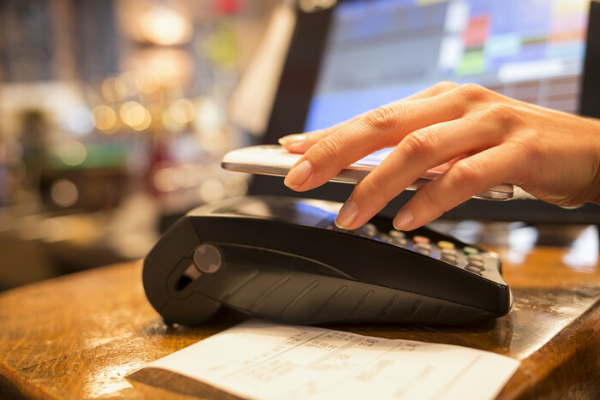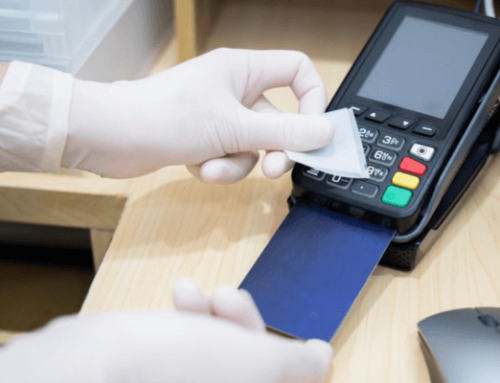
Once the compulsory confinement of our routines has been lifted, hopefully forever, there are nevertheless habits that will prevail and become more pronounced over the next few years. The way we pay for the goods we buy has been and will be one of them.
If, during the mandatory lockdown, we try to avoid physical shops and place the fulfilment of our desires on online platforms, with the reopening of most retail spaces, it is natural and economically fundamental that we once again go out to buy new shoes, a household appliance or a single kilo of apples in the physical shops in the neighbourhood. All this, of course, while complying with the hygiene and safety standards laid down by the health authorities.
Retail and the importance of Contactless POS
We're talking about retail trade as something "economically fundamental". To give you an idea, according to Bank of Portugal figures for last year, this area of activity was responsible for 3 billion payment transactions, with 523.1 billion euros being transacted.
If the figures speak for themselves in terms of the importance of the retail trade to our country's economic health, other, equally important figures stand out when analysing the reports on the main trends in transactions, during and post-confinement, produced by the REDUNIQ Insights knowledge solution.
During lockdown and in the first two weeks of the economy opening up, the use of contactless registered historic growth. In 2019, according to the Bank of Portugal, the number of cards was already increasing (27.5%) and the number of cards was increasing. payment terminals with contactless technology (20.7%), the figures provided by REDUNIQ tell us that, after a month of March with an increase of 113% compared to the same period last year, and April with an increase of 157% compared to the same month last year, the use of contactless once again broke records in the first week of deconfinement with an increase of 160% compared to the figures for the same period in 2019.
In the first two weeks of lockdown, the number of contactless payments grew by 11,30% (1st week) and 22,26% (2nd week), for a volume of transactions that has already exceeded the number recorded in the first week of the State of Emergency (15-21 March) by 64%. Also according to the REDUNIQ report, contactless already accounts for 20% of the total value of transactions in physical shops, catering and retail.
With regard to the average ticket (average value recorded in each transaction) for contactless purchases, the report shows an increase of around 40% since the start of the pandemic, from €14.69 to €20.53, which is a sharp rise compared to the average value of contactless purchases in 2019, which was €14.5.
Retail and contactless go hand in hand, as we see. The trend is for growth and, curiously or not, Covid-19 is being a major ally in achieving this goal.
More hygienic than cash payments due to their "contactless" nature (hence the name contactless) and much more practical and quicker when it comes to making the payment, cards or wearables (smartphones, wristbands, etc.) and the necessary automatic payment terminals with the contactless technology The use of integrated technologies has become yet another ally in the fight against the pandemic, leading the Bank of Portugal and the government to advise their use over more traditional means. If this wasn't enough, many banking institutions that weren't seriously betting on the contactless payments have started sending their customers new cards with this technology already integrated.
As we mentioned at the beginning of our article and as the data shows, the change in the way we pay for our purchases is one of those changes that is definitely here to stay.
Those who buy from retailers should do so with a contactless card, but this will only be possible, as we have seen, if the merchant has a contactless card. automatic payment terminal (TPA physical or mobile), also contactless, that can accommodate it. This need obviously raises a number of questions for customers and businesses when it comes to using this payment method. Over the next few lines we'll try to answer the most important ones.
How does Contactless work?
The way it all works is simple. The operator enters the value and turns the terminal for the customer and it is always the customer who chooses the payment method - chip and PIN or contactless, as the card must not leave the customer's hand. This method is safer and more hygienic for the merchant, who doesn't touch the customer's card.
As a result of changes in consumer habits, many people used to buy in bulk to stock up on goods. Bank of Portugal's decisionDuring the mandatory lockdown, contactless payment transactions of up to €50, instead of the previous €20, can now be made without having to enter your card's PIN and if the overall amount of €150 per day or a maximum of 5 transactions per day has not yet been reached.
If the option is to pay with the smartphone, the customer only has to unlock their mobile phone to authorise payment.
The advantage of all this is that it's as simple as it sounds.
Contactless POS: what are the main advantages?
We've already talked about hygiene here. O payment terminal which has integrated contactless technology, not only prevents the merchant and customer from touching, but also prevents the handling of cash, an excellent vehicle for the spread of bacteria and viruses, including Covid-19.
From hygiene to speed. While cash payments can take up to 23 seconds and card and PIN payments from 10 to 20 seconds, the technology integrated into contactless machines, such as the TPAThis allows you to pay for a good or service in just 4 to 12 seconds.
These advantages are echoed in the Contactless TPA state-of-the-art machines made available to merchants by REDUNIQ. In addition to the issue of hygiene and speed, these machines guarantee these economic agents a reduction in cash handling costs (optimised payment process and easier accounting), higher average transactions and also give them the guarantee that the payment is actually made.
This automatic payment terminal (fixed or mobile) is also equipped with the only contactless technology in Portugal with PCI DSS certification, ensuring that the entire payment process is truly secure in all its dimensions.
Is contactless safe?
In Portugal, as in other European countries, the main card issuing systems offer cards with integrated contactless technology built under the European EMV Chip security standard, which reduces the chance of fraud to insignificance.
If, on the consumer side, security is one of the most important factors in opting for this type of payment, it is no less so on the side of those who provide them with this service: economic agents. Essential parties in this equation are retailers who have a REDUNIQ Contactless TPA are, as we mentioned, safeguarded by the PCI-DSS (Payment Card Industry Security Standards Council) security seal, an independent organisation created by the main international payment systems (Visa, Mastercard, Discover, JCB and American Express) in 2006.
The purpose of PCI-DSS certification is to ensure the confidentiality and integrity of sensitive data associated with the use of cards by their holders, to safeguard merchants from financial and reputational consequences resulting from breaches of confidentiality and to standardise the security requirements to be met by all those involved in the payments area.


